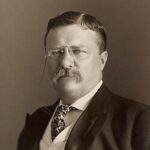The Decision to Launch America’s Greatest Naval Display
President Theodore Roosevelt made a bold decision in December 1907. He ordered sixteen battleships of the Atlantic Fleet to embark on an unprecedented world tour. The Great White Fleet, named for their white-painted hulls, would travel 43,000 miles over fourteen months. This massive naval demonstration aimed to showcase American military capabilities without firing a single shot. 📊 The fleet included 14,000 sailors and the most advanced battleships in the U.S. Navy.
Strategic Timing and International Context
Roosevelt launched this mission during rising tensions with Japan over immigration policies. The 1906 San Francisco school segregation crisis had strained U.S.-Japan relations significantly. Rather than escalate diplomatically, Roosevelt chose naval diplomacy as his primary tool. The Great White Fleet represented a peaceful show of strength designed to deter conflict. ⚠️ Critics worried the mission might provoke international incidents or drain the treasury.
Execution of Roosevelt’s Naval Vision
The fleet departed Hampton Roads, Virginia, on December 16, 1907. They visited twenty ports across six continents during their historic journey. Each stop generated enormous international attention and positive press coverage. The mission demonstrated America’s logistical capabilities and technological advancement to the world. 💰 Congress initially refused funding, but Roosevelt proceeded anyway, forcing legislative approval for the return voyage.
Impact:
Immediate International Recognition
The Great White Fleet tour immediately elevated America’s international prestige and diplomatic standing. Foreign nations welcomed the fleet with elaborate ceremonies and widespread public enthusiasm. Japan’s warm reception in Yokohama particularly impressed observers and eased bilateral tensions significantly. The visit demonstrated that naval power could achieve diplomatic objectives without military confrontation. 🌍 European powers began treating the United States as an equal partner in global affairs.
Long-term Strategic Consequences
Roosevelt’s naval demonstration established several lasting precedents for American foreign policy and military strategy. The tour proved America possessed both the naval capacity and logistical expertise for global operations. It marked the definitive emergence of the United States as a world naval power. The mission also strengthened Roosevelt’s “speak softly and carry a big stick” diplomatic philosophy. 🔥 This peaceful projection of strength became a model for future American international engagement.
Historical Legacy and Assessment
Historians consistently rank the Great White Fleet among Roosevelt’s most successful presidential decisions. The tour achieved its primary objectives without creating international incidents or military conflicts. It enhanced American credibility in international negotiations and treaty discussions for decades afterward. The mission demonstrated how military strength could serve peaceful diplomatic purposes effectively. 📈 Modern naval strategists still study Roosevelt’s approach as an example of successful power projection through peaceful means.
